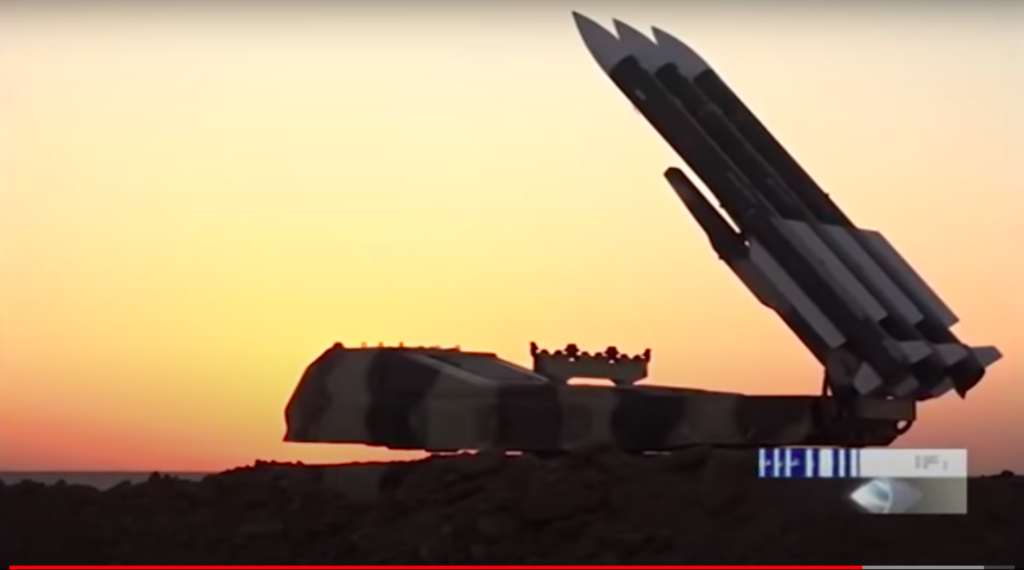
Iranian Khordad anti-aircraft missile system (Iranian TV still)
TEL AVIV: As Israel ramps up airstrikes on Iranian forces and their proxies in Syria, with at least five reported dead, Israeli sources are increasingly anxious that Iran will deploy its Khordad anti-aircraft system to Syria. That would pose a potentially lethal threat to Israeli pilots. Israel has asked Russia to rein in Iran; instead, Russia sent an aircraft to shadow Israeli strike planes.
Israeli aircraft met heavy fire last night over Damascus, and their retaliation reportedly destroyed some Syrian anti-aircraft batteries. At least one Israeli plane was also met in the air by a Russian aircraft scrambled from Syria’s Khmeimim Air Base, according to Russian website Avia Pro. While sources tell Breaking Defense that the Russians didn’t open fire or interfere with the Israeli strike in any evident way, but the maneuver showed their capability to intercept Israeli aircraft if desired.
The backstory to the current crisis: On July 9th, the Iranian Chief of Staff, General Muhammad Bakri, arrived in Damascus to sign a new military agreement with Syrian Defense Minister Ali Abdullah Ayoub. The main pillar of this agreement: an Iranian promise to supply Syria with advanced surface-to-air missiles to Syria.
On July 17th, Israeli defense minister Beny Gantz called his Russian counterpart, Sergey Shoygu, to warn him Israel would not let Iran develop nuclear weapons or strengthen its military presence on its northeast border. In particular, Gantz said Israel would not tolerate the deployment of the Iranian Khordad and asked Russia to pressure Iran not to send the anti-aircraft weapon to Syria.
Last year, Russia deployed its S-300 anti-aircraft system to its bases in Syria. The S-300 is more powerful than the Khordad but Russian crews retain full control of those weapons and have not let the Syrians use them. Iran would have no such compunctions about letting its Khordad be used to shoot down Israeli planes.
“The Russian S-300 in Syria are still operated by the Russians and are not operated against aerial threats,” Israeli defense analyst Tal Inbar told Breaking Defense. “The Iranian missile in the hands of the Syrians will create a problem.”
The Khordad is a “very capable air defense system,” Inbar warned. It was the Khordad that the Iranian Revolutionary Guard Corps says it used last June to shoot down an American RQ-4A Global Hawk drone , sparking a crisis between the two countries.
Iran developed the Khordad based on Russian technologies – it strongly resembles the Russian Buk — putting it into service in mid-2010. It can reportedly engage up to four targets at once with two missiles apiece, at an engagement range of up to 200 km (124 miles), complementing longer-ranged systems bought from Russia, like the S-200 and S-300PMU.
The weapon, also known as Khordad-3, is officially named “3rd of Khordad,” a date in the Iranian calendar.
In a ‘world first,’ DARPA project demonstrates AI dogfighting in real jet
“The potential for machine learning in aviation, whether military or civil, is enormous,” said Air Force Col. James Valpiani. “And these fundamental questions of how do we do it, how do we do it safely, how do we train them, are the questions that we are trying to get after.”


























